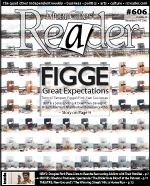Illinois Democrats won a historic victory at the polls this month. Not since the Franklin Roosevelt landslide of 1936 have Democrats controlled every statewide office, both chambers of the General Assembly, and the Illinois Supreme Court.
But you'd never know it if you were in Springfield last week. Instead of bringing them closer together, the landslide has driven them further apart.

 Shannon
Curfman is an old soul in a young person's body.
Shannon
Curfman is an old soul in a young person's body.
 (This
is the first in a series of articles looking at the components of
River Renaissance five years after Scott County voters agreed to
contribute $5 million to the effort. While that amount was relatively
small in the projects' financing, it secured $20 million in Vision
Iowa funding from the State of Iowa.)
(This
is the first in a series of articles looking at the components of
River Renaissance five years after Scott County voters agreed to
contribute $5 million to the effort. While that amount was relatively
small in the projects' financing, it secured $20 million in Vision
Iowa funding from the State of Iowa.)








